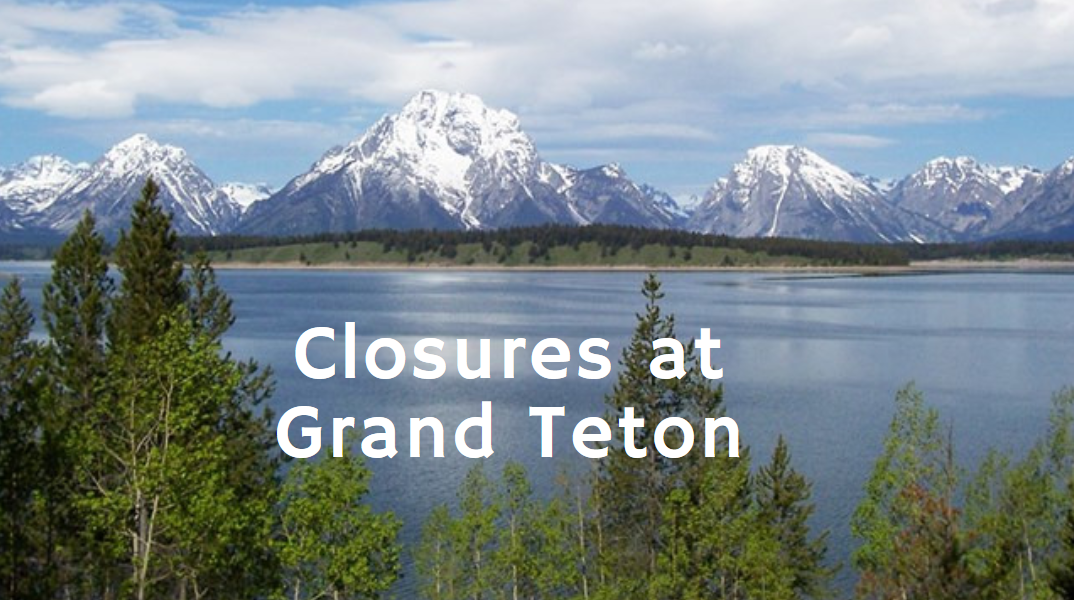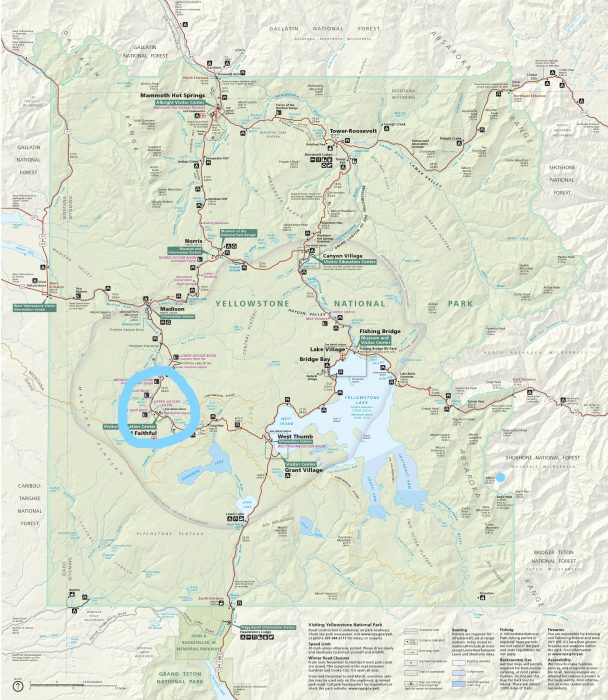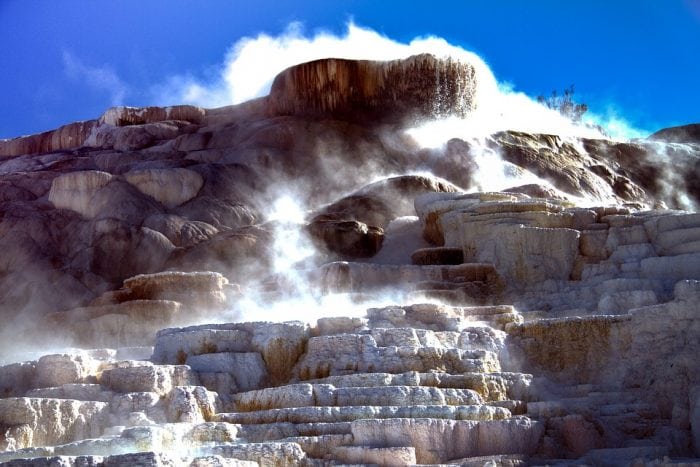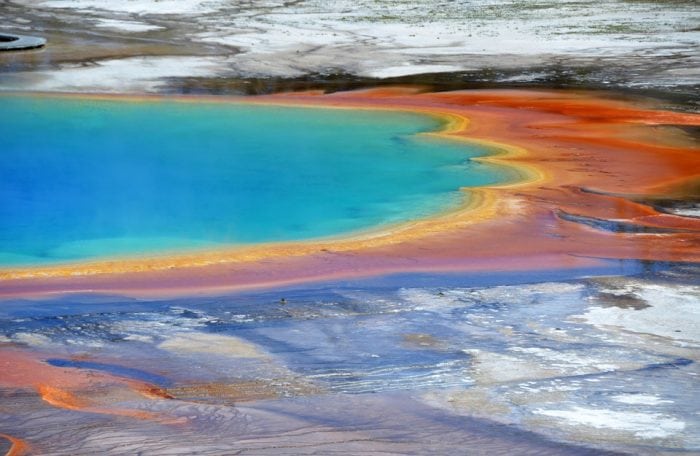
A massive fissure has opened up within the Grand Teton National Park, near the Yellowstone Volcano. The appearance of the fissure has led to the closure of the area immediately surrounding the crack. Geologists are currently monitoring the situation and looking for the expansion of cracks throughout a rocky plateau.

Approximate location of the fissures. Map licensed under CC0 via the National Park Services.
Park Closures Don’t Mean An Eruption Is Coming
The immediate cause of the fissure isn’t clear at this point, but the area is only about 96 kilometers (60 miles) away from the Yellowstone Volcano. The region has been shut down because of the potential for rockfall and the possible appearance of more fissures.
Yellowstone isn’t going to be erupting anytime soon, but the event is still notable to those who study volcano regions because it gives them a chance to learn more about how seismic activity unfolds in the area around a volcano. Yellowstone hasn’t had a powerful eruption for more than 600,000 years, yet scientists are hard at work researching the volcano and trying to uncover its patterns, so they may predict the next eruption.
The Hidden Falls area is closed off to visitors, as well as Inspiration Point. The Hidden Falls is a large waterfall approximately 100 feet tall and is located on the eastern end of a canyon, while the lookout known as inspiration point is on a trail that overlooks Jenny Lake. The other portions of the park are still open to visitors while geologists continue to monitor the buttress near the cracks for signs of movement. To be clear, the reason for the closure is that USGS doesn’t want people being hurt by falling rocks, there’s no reason to think that Yellowstone will erupt anytime soon.
Volcanologists have stressed that the appearance of the fissure near Yellowstone does not mean an eruption is imminent or even likely anytime soon. Dr. Janine Krippner sought to assuage fears by reminding people how often Yellowstone has been speculated to be close to eruption in the past:
If Yellowstone erupted every time a tabloid said it was going to, it would be one of the most active volcanoes on Earth. Yellowstone is, however, one of the most well-monitored volcanoes on Earth. If it were about to erupt, we would see much more than a crack appearing.
The Study Of Yellowstone Volcano
Yellowstone has only seen three major eruptions the past 3 million years. Eruptions occurred approximately 600,000 years ago, 1.3 million years ago and 2.2 million years ago. The last major eruption of Yellowstone was one of the largest volcanic eruptions on the planet, responsible for spewing out approximately 200,000 times the amount of ash that Mount Saint Helens did when it interrupted.

Photo: kasabubu via Pixabay, CC0
According to the geologists who study the volcano, Yellowstone is in the process of refilling the magma chambers within it with magma pulled from the mantle of the earth. Scientists have recently figured out a new way to determine how fast magma is accumulating in the chambers beneath the volcano. Scientists can get a fairly accurate estimate of the volume of magma entering the supervolcano from the mantle with this new technique. The estimates of the recharging process won’t allow scientists to make a prediction of Yellowstone’s next eruption, but the research will assist them in understanding how the supervolcano recharges its magma store, which is a key factor in the eruption process. You can think of the magma as the coal within a furnace, responsible for heating up the boiler, while the boiler is what will actually explode.
After the magma chambers are filled, an eruption could happen at almost anytime, dependent upon other factors like the composition of the magma and the amount of dissolved gasses within the volcano. Another factor influencing the eruption of a volcano is the amount of rhyolite in the volcano, a silica-filled rock that is explosive in nature. When the eruption finally occurs, the magma chamber burst open and throw magma as far as 1000 km³ (240 mi.³) into the air.
Scientists use many different methods of collecting information on volcanoes to estimate possible eruption times. Seismic activity is strongly linked with the eruption of a volcano, and the tracking of tremors and earthquakes in the region around a volcano is important. Researchers also collect information on gas emissions in the area, the amount of ground deformation, and analyze the hydrology of the surrounding area.

Photo: Steppinstars via Pixabay, CC0
Researchers used another method to gather information about the volcano, injecting hot springs in Yellowstone National Park with deuterium, a stable radioactive isotope, which is considered harmless to the environment. The presence of the isotope allowed the research team to analyze the behavior of hydrothermal vents that exist in a maze within the Yellowstone Volcano system. The researchers analyzed concentrations of the isotope, taking into account the temperature of hot springs, and calculated the amount of heat and volume of water emitted by the hot springs.
The Need For Volcano Research
Yellowstone volcano is currently very far from being able to erupt. Scientists think that the reservoirs of magma beneath a volcano must be about 50% full to even come close to eruption, It’s currently estimated that Yellowstone’s reservoirs of magma are only about 15% full.
“Beneath the Yellowstone caldera, Rayleigh wave group velocities are ~25% slower than the regional average with slow anomalies (<−15%) observed from 5 to 24 s. These values are consistent with a magmatic body being heated from below by an underlying plume.” — Kevin J. Seats and Jesse F. Lawrence, taken from their research letter, “The seismic structure beneath the Yellowstone Volcano Field from ambient seismic noise”
Yet if Yellowstone is in no danger of erupting anytime soon, why all the research? The value of studying a dormant volcano like Yellowstone is that it allows scientists to learn more about how volcanoes fill their magma chambers and what changes in the region happen as they do so. The insights gleaned from the study of Yellowstone and its system of springs and hydrothermal vents could help scientists recognize signs of change in more active volcano regions, helping them to predict upcoming eruptions that could potentially harm people.
Recognizing the changes that happen in a volcanic region as a volcano charges its magma reservoirs and prepares to erupt could help scientists better distinguish between dormant/inactive volcanoes and those that pose a threat to human life. It could help them predict the eruption of volcanoes thought to be inactive, like the 2014 Mount Ontake eruption in Gifu, Japan which killed 63 people.









